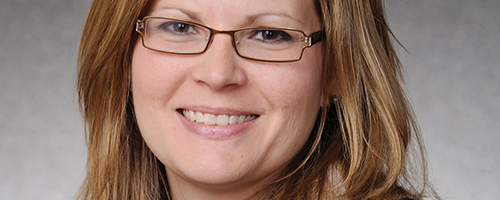In May of this year, Marvel Studios and Walt Disney Pictures released The Avengers, a $220 million project of unforeseen ambition and an all-star ensemble cast that just happened to be written and directed by an impish, red-headed television veteran that nobody besides his cult following had ever heard of. It went on to become the third-highest-grossing film of all time. Joss Whedon has been having one hell of a year.
My life as a Whedonite
In May of this year, Marvel Studios and Walt Disney Pictures released The Avengers, a $220 million project of unforeseen ambition and an all-star ensemble cast that just happened to be written and directed by an impish, red-headed television veteran that nobody besides his cult following had ever heard of. It went on to become the third-highest-grossing film of all time. Joss Whedon has been having one hell of a year.
But not everyone was aware that another, much smaller Whedon project was released less than a month before—the unconventional horror film Cabin in the Woods, which he produced and cowrote and that is playing this weekend at PSU’s Fifth Avenue Cinema. More on that film in a minute.
For the uninitiated, the slightest bit of online digging will give you a clear picture of who Whedon is. You’ll run into terms like “Whedonisms,” the “Whedonverse,” and, yes, “Whedonites”—the name given to devoted fans of his television shows and comic books, and the way he combines fantasy, horror and science fiction with his trademark strengths: strong female characters, distinctive dialogue and a highly original sense of humor. I’ll admit right away to being a card-carrying Whedonite, primed for my support group. I got hooked very young.
I grew up with Buffy the Vampire Slayer, Whedon’s first major television show and the one for which he is most known. The show sprung from his dissatisfaction with the film version of his 1992 script of the same name. Whedon’s concept of turning the typical blond victim in a horror movie into the hero gave Buffy a place in television history.
Across the country, universities offer gender-, pop-culture- and media-themed college courses based on the show—there was even a Buffy class offered at PSU last spring. Academics study Whedon’s snappy writing, absurdist humor and existentialist, humanist philosophy. And Whedonites are quick to mention this when you look at us like we’re a little crazy for our devotion to the brilliance of a show that’s about a girl named Buffy who kills vampires.
This brings me to Cabin in the Woods, the brainchild of Whedon and his longtime collaborator Drew Goddard, a name that will be familiar to fans of the Buffy spinoff show Angel.
Goddard directed Cabin in the Woods, but the film bears Whedon’s distinctive stamp and features many of the actors Whedon has tapped for other projects: Angel’s fantastic Amy Acker and Buffy’s Tom Lenk have cameos in Cabin. Chris Hemsworth filmed the movie (before he was even cast in Thor and before anyone knew The Avengers would happen). Fran Kranz, who starred in Whedon’s show Dollhouse, also has a scene-stealing role, but I refuse to tell you much about it.
Cabin in the Woods is a horror movie. If you haven’t seen it, that’s all you should really know. It’s difficult to review because, as a longtime Whedonite and a fan of horror in general, I don’t want to ruin a single thing.
The premise is simple. Five college kids, played by Hemsworth, Kranz, Kristen Connolly, Anna Hutchison and Jesse Williams, go to a cabin in the woods. From then on, it becomes a highly original tale crafted with a twisted sense of satirical comedy. Whedon and Goddard have both called it a critical statement aimed at torture porn (i.e., Saw and Hostel). The film was a hit with critics and has already gained what Whedon is used to by now: devoted cult followers.
When I first saw Cabin in the Woods, it made me realize that I missed Whedon’s work more than I had even realized. It’s been nine years since Buffy ended and eight since the end of Angel, and none of his work has been on television since 2009. Seeing fresh material from Whedon and Goddard felt like a genuine gift, like getting to spend an afternoon with the coolest and funniest kid you knew in high school and realizing how much more fun life was when he was around.
Cabin also made me think about how starved Hollywood is for originality, and how lucky it was that the filmmakers were able to get this produced. The best thing about The Avengers, if you’re a Whedonite, is that it will now be much easier for him to make movies like Cabin in the Woods in the future.
Cabin in the Woods (2012)
510 Hall St.
Oct. 26 and 27, 7 p.m. and 9:30 p.m.
Oct. 28, 3 p.m.
$3 general admission; free for students
In July of this year, the San Diego Comic-Con International hosted a 10-year reunion panel for Whedon’s short-lived but much-loved science fiction series Firefly. I was there, and word among the crowd was that the line stretched for seven blocks past the convention center.
In September of this year, Whedon premiered a little black-and-white version of Much Ado About Nothing at the Toronto Film Festival. He shot it at his own home—for fun, during his time off—and the film stars many well-known Whedonverse actors. Whedon’s stellar 2012 continues.
Following the success of The Avengers, Whedon signed a three-year deal with Marvel, not only to direct the sequel, but to develop a television show based on that universe. In addition, he continues to write and produce smaller films.
Hollywood is finally beginning to give Whedon the recognition he deserves, and soon, being a Whedonite might mean belonging to a much bigger club than ever before. The Whedonverse is expanding.





